Beginning My 50th Year of Cryptozoology
Posted by: Loren Coleman on March 20th, 2009
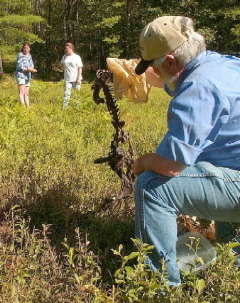
One year from today will be a personal milestone. It will end the 50th full year of my study of cryptids and those who search for them. I began researching “cryptozoology” on March 20, 1960, after being energized and intrigued by watching a film on Yetis on March 18-19, 1960. I little understood this path I was taking. Now I find myself at the start of my 50th year of doing this work.
My two great mentors, Ivan T. Sanderson and Bernard Heuvelmans, whom I naturally use as temporal yardsticks, stretched their cryptozoological lives out to a similar length.
Sanderson, who was born in 1911, was only 13 when he lost his father to a goring by a rhino in 1924. Sanderson’s life took a turn and perhaps due to his inheritance from his late father’s whiskey business, Ivan began a yearlong trip around the world, at the age of 17. That would have been 1928.
Sanderson came up with the idea for the word “cryptozoology” in the 1930s or 1940s, his associate Heuvelmans would write later in both their lives. So, let’s give Sanderson the benefit of the doubt and say that he was involved in pursuing “cryptozoology” from the age of 17 until his death. That would be from 1928 through 1972, as Ivan was in bad shape in the months leading up to his death on February 19, 1973. That was 44 years of cryptozoology.
Heuvelmans can date his own first interest and pursuit of his mostly bibliographical research in cryptozoology with his reading of Sanderson’s January 1948 article on the possible survival of dinosaurs, such as Mokele-mbembe. Heuvelmans was still a jazz musician, comedian, and only beginning as a science writer, during the late 1940s. But, once again, dating Heuvelmans’ start in cryptozoology from the earliest possible indicator, his span of study would have been from January 1948, through his date of death, August 22, 2001. The course of Heuvelmans’ groundbreaking work thus covered a good 52 years.
Fifty years of doing this work feels like such a brief time, if you ask me. My hope is the future will see people starting very early in the field, and putting in 75 years of study. Maybe I still have a chance to make that mark?
I once compared doing cryptozoology to building a pyramid, and it might take a bit of time to see the progress. I often am sad to see newly-made crypto friends come and go, but I understand why some people leave, in frustration, when Bigfoot isn’t discovered in five years. Heuvelmans was correct to say one needed both passion and patience to do cryptozoological research.
So many questions remain unanswered in this field, out in the field and in the library, and I still have much to do. I’ve tried to do a bit of each of the kinds of things I saw Sanderson and Heuvelmans doing. Of course, some inquiries are the historical ones you have heard me ask before. One of my favorites really speaks to the giants upon whose shoulders I stand: Did anyone place, in English usage, the word “cryptozoology” in print before 1960? There are clues out there. But the archives are disappearing. The libraries are vanishing. Will the our science survive this economical depression?
I asked the question here three years ago, about the origins of the word “cryptozoology.” I shall try again, with those who have only recently discovered cryptozoology; I’ll ask again and again. You never know what may newly interest someone’s (your?) research fancy. I’ll keep on with the museum, similarly, as long as I can.
Can you help discover something new about the origins of the word “cryptozoology”? And more of its publication history, before all the second wave generation of cryptozoologists, like me, die?
This is one of the kinds of buttons to click.
Cryptozoology, as everyone reading here knows, means “the study of hidden animal.” It is carried out by people.
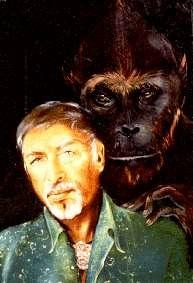
In 1955, Belgian zoologist Bernard Heuvelmans wrote a groundbreaking book in French, a now classic opus entitled (in English) On the Track of Unknown Animals. But in the 1955 French and the 1958 English editions, you will not find the word “cryptozoology,” in any language.
The first published use of the word “cryptozoology” in French, occurred in 1959 in a book by wildlife biologist Lucien Blancou, dedicated to “Bernard Heuvelmans, master of cryptozoology”. At least, that is as far as we know.
The premiere utilization of the term “cryptozoological,” in English, was in 1961, in Abominable Snowmen: Legend Come to Life by Ivan T. Sanderson.

In Heuvelmans’s 1968 book In the Wake of the Sea Serpents, it is clear that the word “cryptozoology” had been around for perhaps over twenty years before it came into print in 1959. Speaking of two articles on water monsters written in 1947 and 1948 by Ivan T. Sanderson (shown, at left), Heuvelmans wrote: “When [Sanderson] was still a student he invented the word ‘cryptozoology,’ or the science of hidden animals, which I was to coin later, quite unaware that he had already done so.”
Intriguingly, Heuvelmans apparently left this paragraph out of all earlier and later French editions of this same Sea Serpent book.
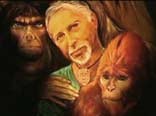
Are there other early uses of “cryptozoology,” in print before 1959, undiscovered by myself and French colleagues Michel Raynal and Jean-Luc Rivera? When? Where? By whom?
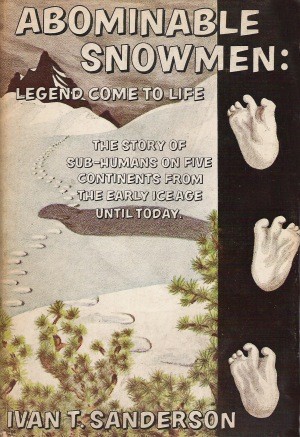
Are there other published examples, in English, from Sanderson or anyone else, of the use of “cryptozoology” before 1961?
Help find the hidden words and paint the complete history of cryptozoology. Help keep the study of cryptozoology active, alive, and moving forward into the future.
Help keep the study of cryptozoology, truly alive, for it is the best true science of animals, which breaks new ground every day.
Celebrate the beginning of my 50th year with some building blocks in that pyramid, onward to a grand anniversary in 2010.
Will cryptozoology be recession proof? Your small donations do mount up and in the last few days a little under $200 has been contributed. That assistance is huge, and speaks to how your ten dollars is important. Your help is needed. The IRS troubles put the museum in need of $3000.
Please remember to donate to the museum, in any amount, and today you may use PayPal to [email protected] (not the Cryptomundo button above, but one of the two “donate: buttons in the positng), or direct a check, money order, or, if outside the USA, an international postal money order made out “International Cryptozoology Museum” to
International Cryptozoology Museum
c/o Loren Coleman
PO Box 360
Portland, ME 04112
An easy-to-use donation button is now available merely by clicking the DONATE button below, which takes you to a donation site without you having to be a member of PayPal. Thank you, everyone!
Where are all the cryptozoology angels? Do something, even a little, for your soul today. What will your post-Sanderson legacy be? No amount is too small.
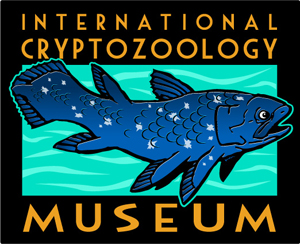
The ICM is not a 501(c)3. But you’ll feel good after you send in merely $10! Thank You.
About Loren Coleman
Loren Coleman is one of the world’s leading cryptozoologists, some say “the” leading living cryptozoologist. Certainly, he is acknowledged as the current living American researcher and writer who has most popularized cryptozoology in the late 20th and early 21st centuries.
Starting his fieldwork and investigations in 1960, after traveling and trekking extensively in pursuit of cryptozoological mysteries, Coleman began writing to share his experiences in 1969. An honorary member of Ivan T. Sanderson’s Society for the Investigation of the Unexplained in the 1970s, Coleman has been bestowed with similar honorary memberships of the North Idaho College Cryptozoology Club in 1983, and in subsequent years, that of the British Columbia Scientific Cryptozoology Club, CryptoSafari International, and other international organizations. He was also a Life Member and Benefactor of the International Society of Cryptozoology (now-defunct).
Loren Coleman’s daily blog, as a member of the Cryptomundo Team, served as an ongoing avenue of communication for the ever-growing body of cryptozoo news from 2005 through 2013. He returned as an infrequent contributor beginning Halloween week of 2015.
Coleman is the founder in 2003, and current director of the International Cryptozoology Museum in Portland, Maine.










Congrats on your nearly 50 years in cryptozoology Loren. I hope you get to see the 75 year mark, and maybe more, and I hope you keep sharing your knowledge and inspiration.
Great to see you celebrating nearly 50 years of interest in Cryptids, Loren. I am celebrating 33 years this month myself, more particularly in research into hairy hominids, but I do enjoy seeing other cryptids profiled as well. Some of my other favorite cryptids are out-of-place big cats, giant birds, giant reptiles and dogman reports. Great article, Loren. Heck, great blog overall.
Congrats Loren on your 50th year of cryptozoology.
Feliz Aniversario Loren!
Here’s hoping for another 50 years of cryptozoological research—Hey, we’re in the XXIst century here, maybe Ray Kurzweill is right and the Singularity will help us live forever 😉
I always thought bigfoot was real, but I only really started researching and getting interested in cryptozoology after I did a large project on it for school last year.
Bernard Heuvelmans milestone book “On the Track of Unknown Animals” truly began my interest in cryptozoology. Ivan T. Sanderson’s works soon followed back in the late 60s. Loren Coleman’s numerous magazine articles and outstanding books cemented that interest for good. My heartfelt congratulations to you Loren on your amazing milestone and upcoming 50th anniversary in cryptozoology. And may it continue for many more years to come.
You’re in good company Loren!
Congrats, and here’s to celebrating your cryptozoological Centennial in a few years !